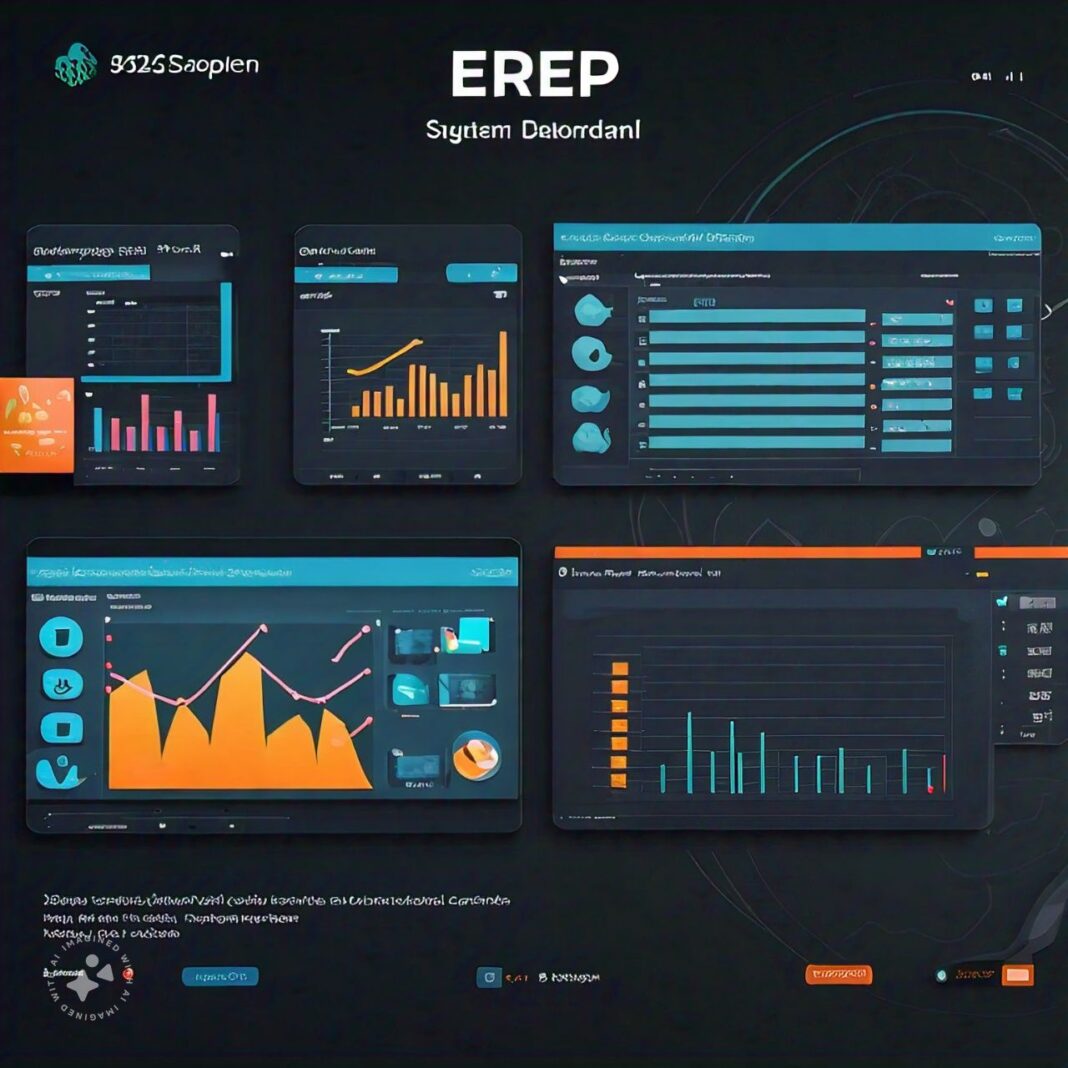In today’s fast-paced business environment, organizations of all sizes are increasingly turning to Enterprise Resource Planning (ERP) systems to streamline their operations and enhance efficiency. An ERP system integrates various business functions into a single, unified platform, allowing companies to manage their finances, human resources, supply chain, and more with greater accuracy and ease.
For business owners and executives, selecting the right ERP system is a critical decision that can significantly impact the organization’s overall performance. The right ERP system not only improves operational efficiency but also provides valuable insights that drive strategic decision-making. However, with a wide array of ERP solutions available in the market, finding the one that best fits your specific business needs can be challenging.
This article aims to guide you through the process of evaluating ERP options by providing a comprehensive overview of the key considerations and steps involved. Whether you are looking to replace an outdated system or implement an ERP solution for the first time, understanding your business requirements and how different ERP systems align with those needs is crucial for making an informed decision.
We will explore essential topics such as understanding ERP systems, identifying your business needs, key features to look for, comparing vendors, cost considerations, and more. By the end of this guide, you will be equipped with the knowledge needed to select an ERP system that will support your business goals and drive long-term success.
Understanding ERP Systems
Definition and Purpose
An Enterprise Resource Planning (ERP) system is a comprehensive software platform designed to integrate and manage the core business processes of an organization. ERP systems provide a centralized system where data from various departments—such as finance, human resources, supply chain, and customer relations—can be consolidated, processed, and analyzed.
Key Functions and Modules:
- Finance and Accounting: Manages financial transactions, general ledger, accounts payable and receivable, and financial reporting.
- Human Resources (HR): Handles employee records, payroll, recruitment, benefits administration, and performance management.
- Supply Chain Management: Oversees procurement, inventory management, order fulfillment, and supplier relations.
- Customer Relationship Management (CRM): Manages customer interactions, sales processes, and customer service.
Benefits of ERP Systems
Implementing an ERP system offers numerous benefits that can significantly enhance organizational efficiency and effectiveness:
- Improved Efficiency and Productivity: By automating routine tasks and streamlining processes, ERP systems reduce manual effort and errors, leading to faster and more accurate operations.
- Enhanced Data Accuracy and Reporting: Centralized data storage ensures that information is consistent and up-to-date, facilitating accurate reporting and analysis.
- Better Decision-Making and Strategic Planning: With comprehensive data and advanced analytics, ERP systems provide valuable insights that support informed decision-making and strategic planning.
Understanding the fundamental aspects of ERP systems is essential for evaluating which solution will best meet your business’s unique needs. With this foundation, you can better assess how different ERP options align with your objectives and requirements.
Identifying Business Needs
Assessing Business Requirements
Before selecting an ERP system, it is crucial to thoroughly assess your organization’s specific needs. This involves a detailed analysis of your current processes, identifying areas where improvements are needed, and understanding how an ERP system can address these gaps.
Conducting a Needs Assessment:
- Map Current Processes: Document and analyze existing workflows, including finance, HR, supply chain, and other key business areas. Identify inefficiencies, bottlenecks, and areas where manual processes are causing delays or errors.
- Identify Gaps and Pain Points: Pinpoint where your current systems fall short in meeting business demands. This might include issues with data accuracy, integration challenges, or limitations in functionality.
Defining Key Objectives:
- Set Clear Goals: Determine what you aim to achieve with an ERP system. Objectives might include improving operational efficiency, enhancing financial visibility, or streamlining customer management.
- Align ERP Features with Business Objectives: Ensure that the ERP solutions you evaluate offer functionalities that align with your goals. For instance, if improving inventory management is a priority, look for ERP systems with robust supply chain modules.
By carefully assessing your business needs and defining clear objectives, you lay a solid foundation for selecting an ERP system that will effectively support your organization’s strategic goals.
Also Read: Airdrops & Rewards: Top Ways to Earn Free Crypto
Key Features to Look for in an ERP System
When evaluating ERP systems, it’s important to identify and prioritize the features that will best address your organization’s specific needs. Below are key features to consider:
Core Functionalities
Finance and Accounting:
- General Ledger Management: A comprehensive general ledger that supports multiple currencies, consolidation, and financial reporting.
- Accounts Payable and Receivable: Efficient management of vendor payments and customer invoicing, including automation of routine tasks.
- Budgeting and Forecasting: Tools for budgeting, financial planning, and forecasting to aid in strategic decision-making.
Human Resources (HR):
- Employee Records Management: Centralized storage of employee data, including personal details, job roles, and performance history.
- Payroll Processing: Automated payroll calculations, tax compliance, and benefits administration.
- Recruitment and Onboarding: Modules for managing the recruitment process and new employee onboarding.
Supply Chain Management:
- Inventory Management: Real-time tracking of inventory levels, automated reordering, and management of stock across multiple locations.
- Order Fulfillment: Streamlined processes for order processing, shipping, and customer communication.
- Supplier Management: Tools for managing supplier relationships, procurement processes, and contract management.

Customer Relationship Management (CRM):
- Sales Management: Tools for tracking sales opportunities, managing customer interactions, and analyzing sales performance.
- Customer Service: Features for handling customer support requests, managing service levels, and tracking customer satisfaction.
Scalability and Flexibility
Scalability:
- Ensure the ERP system can scale with your business growth. Look for solutions that offer modular components, allowing you to add or upgrade functionalities as needed.
Flexibility:
- Evaluate the system’s ability to be customized to fit your unique business processes. Customization options might include configurable workflows, tailored reports, and personalized user interfaces.
User Experience and Interface
Ease of Use:
- Assess the user interface for intuitiveness and ease of navigation. A user-friendly interface reduces training time and increases user adoption.
Training and Support:
- Check for comprehensive training resources and ongoing support to ensure your team can effectively utilize the ERP system. This might include user manuals, online tutorials, and dedicated support teams.
Selecting an ERP system with the right combination of core functionalities, scalability, flexibility, and user experience is crucial for maximizing the benefits of your investment. Ensure that the system you choose aligns with your business needs and can grow with your organization.
Comparing ERP Vendors
Once you have a clear understanding of your business needs and the key features to look for in an ERP system, the next step is to compare different ERP vendors. This process involves evaluating the offerings of various vendors to determine which one aligns best with your requirements.
Top ERP Vendors Overview
Here is a brief overview of some leading ERP vendors in the market:
- Known for its comprehensive suite of ERP solutions that cater to large enterprises. SAP offers robust functionalities across finance, HR, supply chain, and more, with a focus on scalability and global operations.
- Provides a wide range of ERP solutions suitable for both mid-sized and large organizations. Oracle’s ERP systems are known for their advanced analytics, integration capabilities, and strong financial management features.
Microsoft Dynamics:
- Offers ERP solutions that integrate seamlessly with other Microsoft products. Microsoft Dynamics is favored for its user-friendly interface and flexibility, making it suitable for businesses of various sizes.
- A cloud-based ERP solution popular among mid-sized and growing businesses. NetSuite provides a unified platform for financial management, CRM, and eCommerce, with strong capabilities in scalability and customization.
Vendor Comparison Criteria
When comparing ERP vendors, consider the following criteria:
Cost and Pricing Models:
- Initial Costs: Evaluate the upfront costs, including licensing fees and implementation expenses.
- Ongoing Costs: Consider subscription fees, maintenance, and support costs. Look for transparent pricing models to avoid unexpected expenses.
Implementation and Maintenance Support:
- Assess the level of support provided during implementation and post-implementation. This includes project management assistance, data migration, and ongoing maintenance.
Integration Capabilities:
- Ensure the ERP system can integrate with your existing software and systems. This is crucial for maintaining data consistency and streamlining processes across the organization.
Customer Service and Support:
- Evaluate the quality of customer service and support offered by the vendor. Look for options such as 24/7 support, dedicated account managers, and comprehensive training resources.
Also Read: Financial Consultant in Wealth Management

Cost Considerations
When evaluating ERP systems, understanding the costs involved is crucial for making an informed decision. ERP systems can represent a significant investment, so it’s important to consider both the initial and ongoing expenses to ensure they align with your budget and financial goals.
Upfront Costs
Licensing Fees:
- Per User Licensing: Some ERP systems charge based on the number of users who will access the system. This can vary widely depending on the vendor and the scale of the deployment.
- Subscription Fees: For cloud-based ERP solutions, there may be subscription fees based on the features and number of users. This typically involves a recurring monthly or annual charge.
Implementation Costs:
- Consulting and Setup: Costs for consulting services, system configuration, and initial setup. This may include customizations and integration with existing systems.
- Data Migration: Expenses related to transferring data from legacy systems to the new ERP system. This includes data cleansing, validation, and migration efforts.
- Training: Costs for training employees to use the new ERP system. This can include formal training sessions, user manuals, and ongoing support.

Ongoing Expenses
Maintenance and Support:
- Annual Maintenance Fees: Regular fees for software updates, patches, and general maintenance. These fees are typically a percentage of the initial licensing costs.
- Technical Support: Costs for ongoing technical support, including troubleshooting, bug fixes, and customer service. Some vendors offer tiered support levels with varying costs.
Upgrades and Additional Features:
- System Upgrades: Expenses associated with upgrading to newer versions of the ERP system. This may be necessary to access new features or maintain compatibility.
- Add-Ons and Modules: Costs for additional modules or features that were not included in the initial purchase. These can enhance functionality but add to the overall cost.
Total Cost of Ownership (TCO)
Evaluating Long-Term Financial Implications:
- Calculate TCO: Consider all costs associated with the ERP system over its entire lifecycle, including upfront costs, ongoing expenses, and potential future costs. This will provide a clearer picture of the total investment required.
- Compare with Budget: Ensure the total cost aligns with your budget and financial planning. Assess whether the benefits and efficiencies gained from the ERP system justify the overall investment.
Understanding the full spectrum of costs associated with an ERP system is essential for making a well-informed decision. By evaluating both the upfront and ongoing expenses, you can better gauge the financial impact and ensure that the ERP system aligns with your organization’s budgetary constraints and financial objectives.
Also Read: Airdrops & Rewards: Top Ways to Earn Free Crypto
Implementation Strategy
Successfully implementing an ERP system is critical to realizing its full benefits. A well-planned implementation strategy ensures a smooth transition and minimizes disruptions to your business operations. This section outlines the key steps and considerations for effectively implementing an ERP system.
Planning and Preparation
Project Management and Timelines:
- Develop a Project Plan: Create a detailed project plan that outlines the key milestones, timelines, and responsibilities for the ERP implementation. This plan should include phases such as planning, design, development, testing, and deployment.
- Allocate Resources: Assign a dedicated project team, including internal staff and external consultants, to manage the implementation process. Ensure that team members have clear roles and responsibilities.
Change Management and Stakeholder Engagement:
- Engage Stakeholders: Involve key stakeholders from different departments early in the process to gather input and ensure that their needs are considered. Regular communication with stakeholders helps manage expectations and gain buy-in.
- Manage Change: Develop a change management strategy to address any resistance to the new system. Provide clear communication about the benefits of the ERP system and how it will impact workflows and processes.
Data Migration and Integration
Data Migration:
- Plan Data Transfer: Develop a data migration plan that outlines how data will be extracted from legacy systems, cleansed, and loaded into the new ERP system. Ensure data accuracy and completeness during the transfer process.
- Test Data Migration: Conduct thorough testing of the data migration process to identify and resolve any issues before going live. This helps ensure that data in the new ERP system is accurate and reliable.
Integration with Existing Systems:
- Evaluate Integration Needs: Identify other systems and applications that need to integrate with the ERP system. This may include CRM systems, eCommerce platforms, or other business software.
- Develop Integration Plan: Create a plan for integrating the ERP system with existing systems to ensure seamless data flow and process alignment. Consider using middleware or integration tools if necessary.
Also Read: Best Cryptos to Invest in Now for High Returns

Training and Support
Employee Training:
- Provide Training: Offer comprehensive training to employees who will be using the ERP system. This may include classroom training, online courses, and hands-on practice sessions.
- Create Training Materials: Develop user manuals, quick reference guides, and other training materials to support ongoing learning and address common questions.
Ongoing Support:
- Establish Support Channels: Set up support channels for users to seek assistance and resolve issues that may arise during and after the implementation. This may include help desks, online support, and dedicated account managers.
- Monitor and Improve: Continuously monitor the ERP system’s performance and gather feedback from users to identify areas for improvement. Regularly review and update the system to ensure it continues to meet your business needs.
By following a structured implementation strategy, you can ensure a successful deployment of your ERP system. Proper planning, data migration, integration, training, and support are essential to achieving a smooth transition and maximizing the benefits of your new ERP system.
Also Read: Cryptocurrency Storage: Top Security Methods and Best Practices
Conclusion
Selecting the right ERP system is a critical decision that can significantly impact your organization’s efficiency, effectiveness, and overall success. By following a structured approach to evaluating ERP options, you can ensure that the system you choose aligns with your business needs and supports your strategic goals.
Choosing an ERP system is a significant investment that requires careful consideration and planning. By taking the time to evaluate your options thoroughly and aligning the system with your business goals, you can enhance operational efficiency, improve data accuracy, and support strategic decision-making.
As you move forward in selecting and implementing an ERP system, remember that ongoing assessment and adaptation are key to maximizing its benefits. Stay engaged with your system’s performance and continuously seek ways to optimize its use to drive long-term success for your organization.






